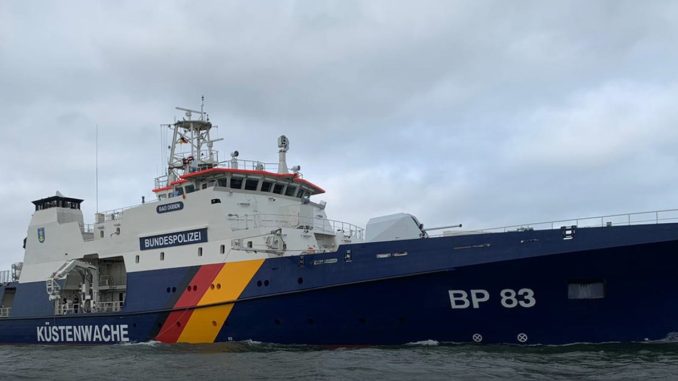
SHAH ALAM: Singapore Defence Ministry on November 20 announced it has signed a contract with German shipbuilder, Fassmer to acquire four OPVs to replace the existing Sentinel-class maritime security vessels.
It said the ships are based on a proven OPV design by the German Federal police. The German Federal Police operates three 86-meter OPVs, Potsdam (BP81), Bamberg (BP82) and Bad Düben (BP83).
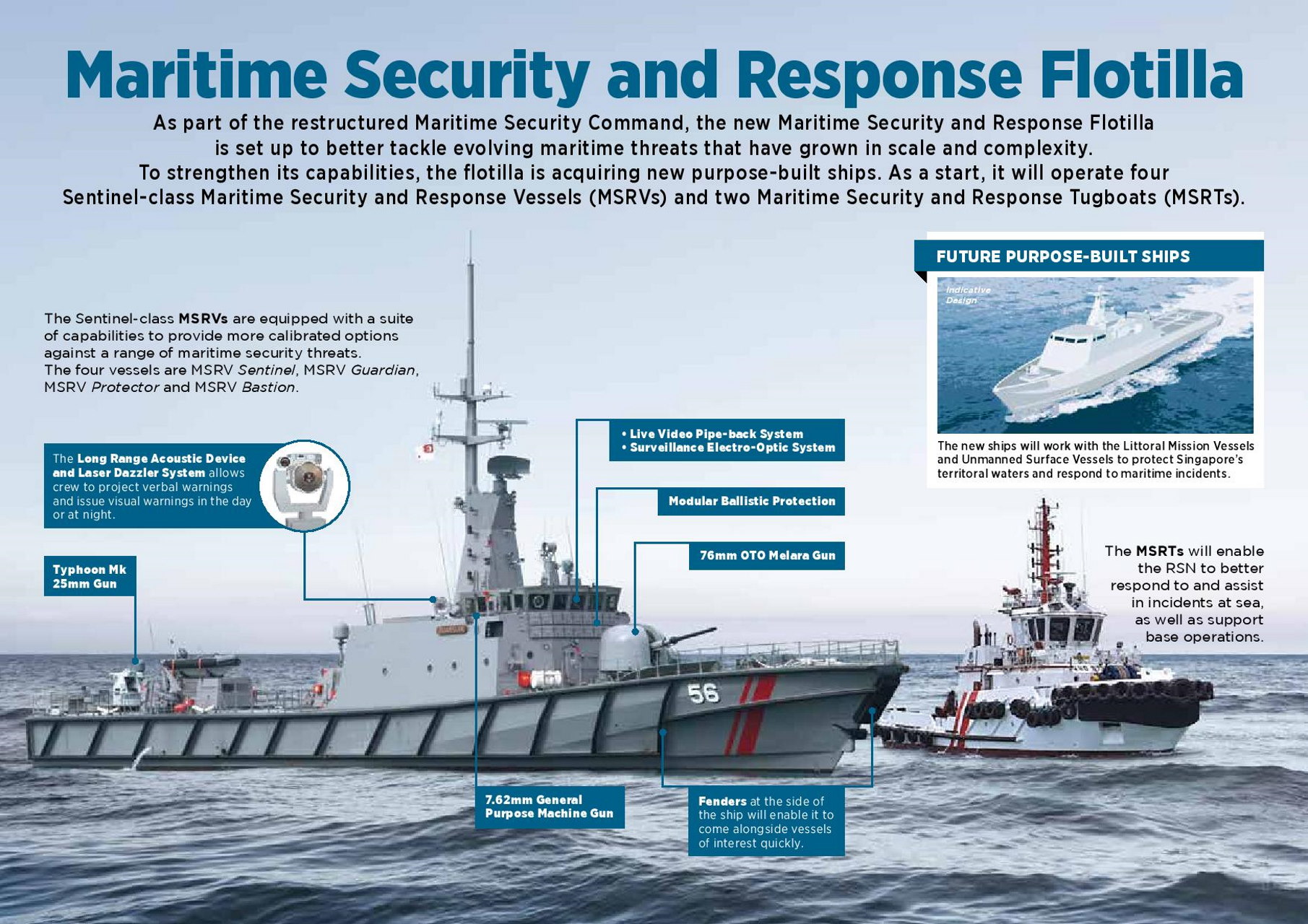
The OPVs feature a flight deck that accommodate the Super Puma medium helicopter and have enough storage space for five mission containers. They can also launch and recover two interceptor boats. The ships are armed with a 57mm main gun and machine guns.
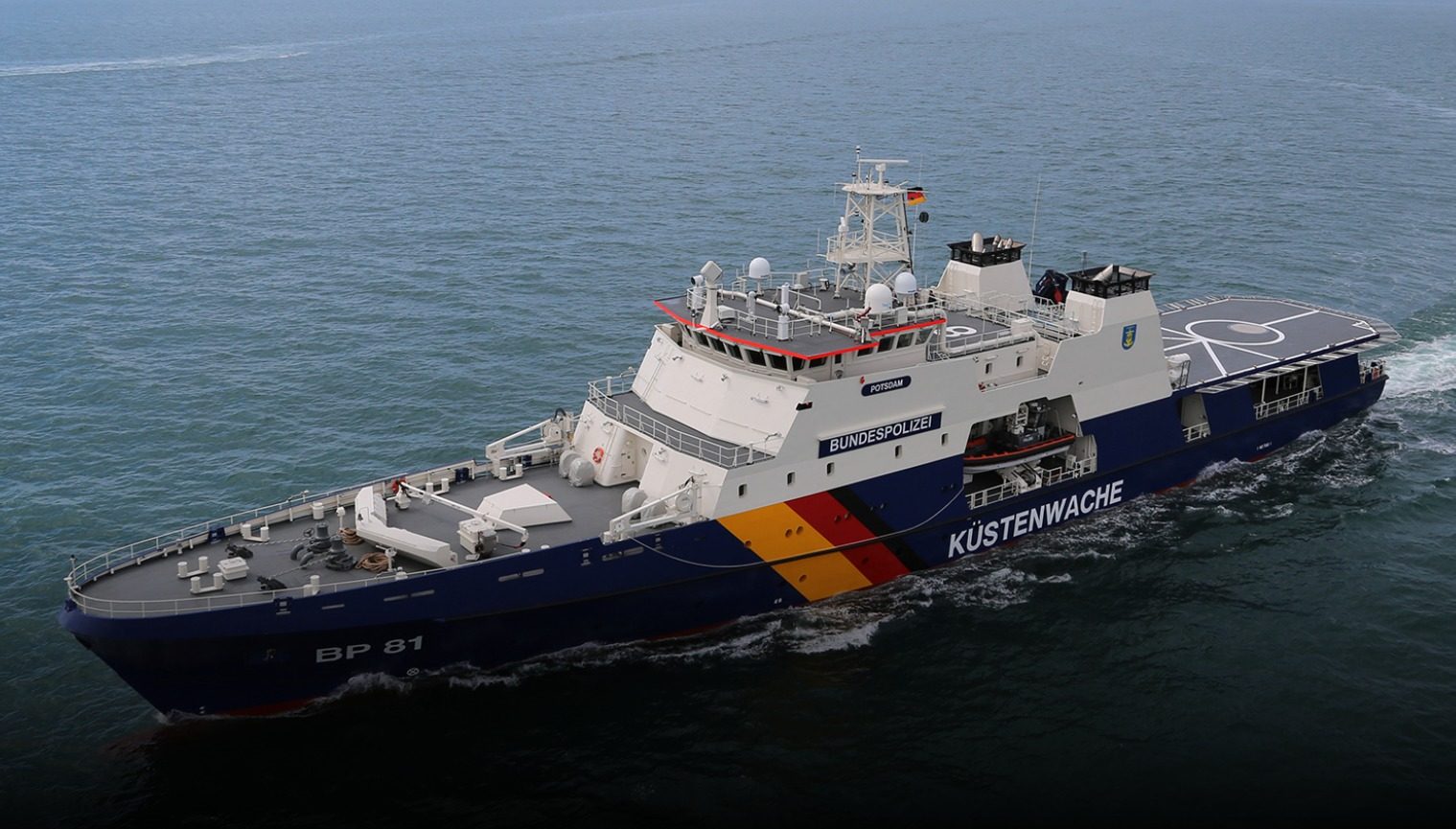
Release from Singapore Mindef:
MINDEF has signed a contract with Fr. Fassmer GmbH & Co. KG (Fassmer) to acquire four new Offshore Patrol Vessels (OPVs) to replace the existing Sentinel-class Maritime Security Response Vessels (MSRVs).
The ships are based on a proven OPV design operated by the German Bundespolizei (Federal Police), and are designed with high manoeuvrability to operate in Singapore’s congested waters, and equipped with a suite of lethal and less-lethal capabilities to provide flexibility and calibrated response against a wide spectrum of maritime threats.
The four OPVs will be delivered progressively from 2028 onwards. The MSRVs will remain in operational service until the OPVs are delivered and operationalised.
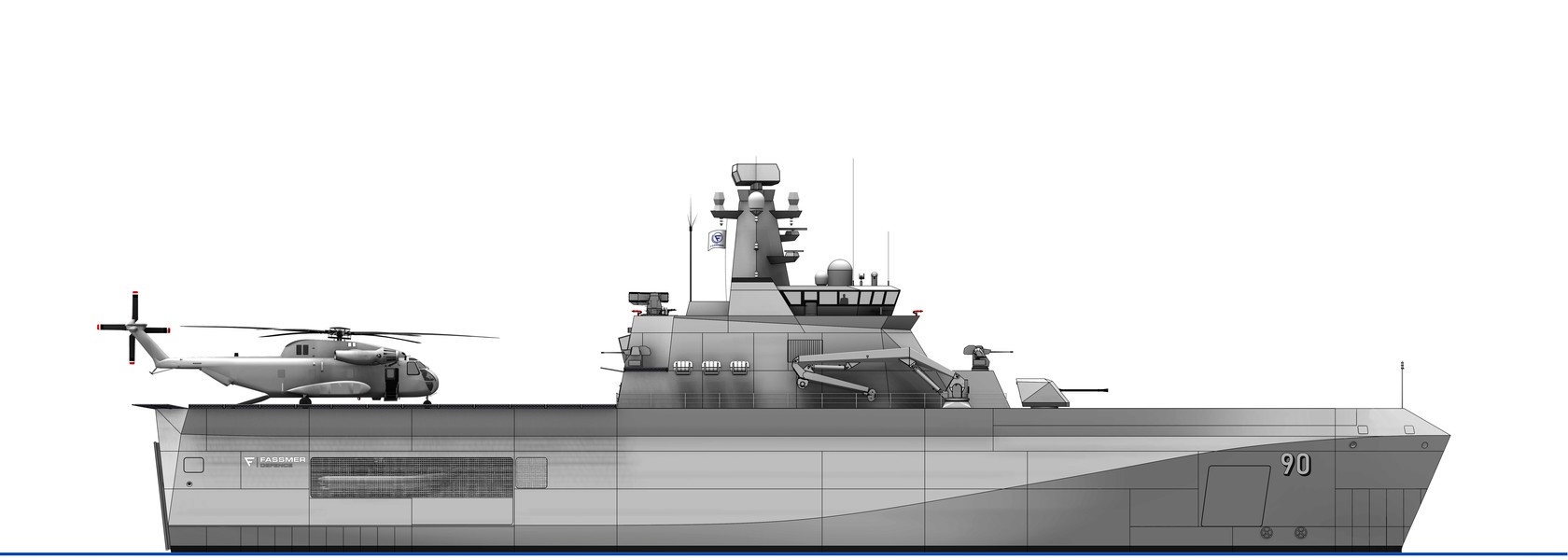
The release did not say whether the ships will be built in Singapore or Germany. The latter is more likely at least for the first vessel. It also did not say whether the ships will be armed be armed but as RSN has standardised to the Oto-Melara 76mm gun, it is likely to be preferred instead of the 57mm as used by the Germans. It must be noted that Fassmer also has drawing of a heavily armed OPV – equipped with missiles – on its website.

MMEA operates the Bagan Datuk class NGPC, a design derived from Fassmer. A 80 meter design from Fassmer was also offered for the MMEA OPV project but it lost out to the Damen design. MMEA had also specified a Fassmer design mother-ship but the tender got the cancelled.
— Malaysian Defence
If you like this post, buy me an espresso. Paypal Payment

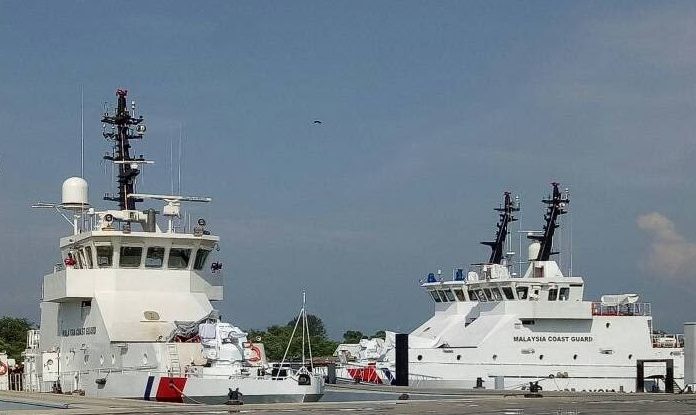
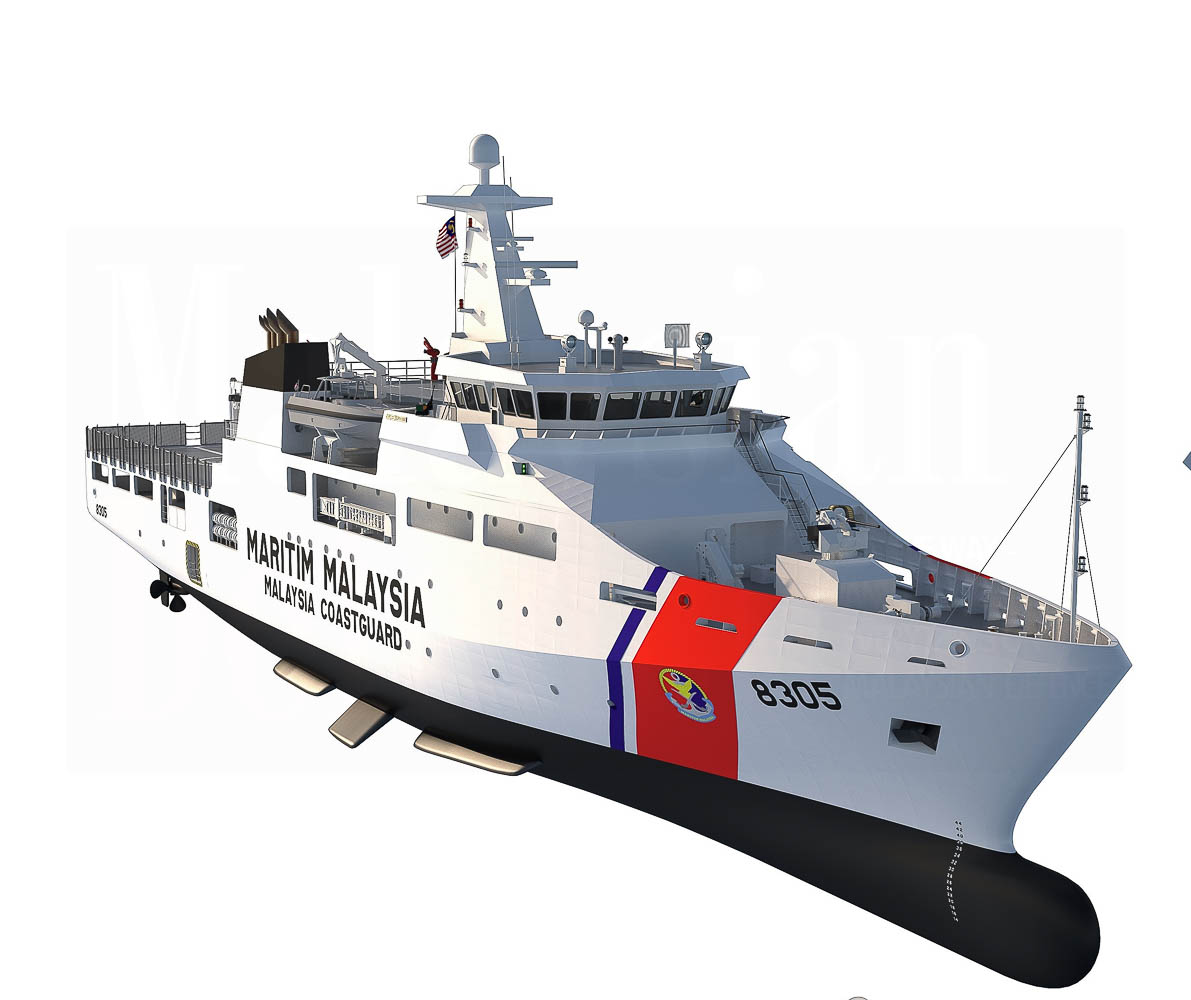

Looks like APMM had a good look at this.
https://pbs.twimg.com/media/F_YOGL7a4AA9yUc.jpg
Prefer the much bigger 3-4000ton tae pyung yang OPV for APMM needs. This cost around USD60 million each while being a ship bigger than our Gowind frigates.
They always had a good look. Whether or not money is available is the issue. Yes, I know you mentioned the cost, but it is not you or me who decides what vessels get funded and at what price.
… – “Prefer the much bigger 3-4000ton tae pyung yang OPV for APMM needs”
I prefer a few OPVs displacing around 1,500 tonnes or slightly more but certainly not 3-4,000 tonnes which would be superfluous; not unless we intend on extended patrols or fishery protection in the Aleutians or Marianas.
The MMEA’s NGPC; I always thought the design looks odd; a bit top heavy.
@ marhalim
“but it is not you or me who decides what vessels get funded and at what price”
Of course marhalim, of course.
Its not us who decides, but what I can show to those who can decide of what that can be done, what is available, and at what costs.
Regarding APMM for example, even with the limited budget, there is a lot of things that can be done.
Cost effective ships (compared to what that has been bought previously) could be bought. Build programs could be planned with other national shipbuilding programs, such as PETRONAS Project Safina. Used ships could be bought or acquired for free. There are alternative ways of doing long endurance patrols with low cost, by harnessing wind power for example.
https://www.popsci.com/uploads/2019/03/18/W7SBZLB5B3C524UBCACKCKFJZU.jpg
It is not superfluous, as even Chinese coast guard cutters sailing in malaysian EEZ is of 3,000 tons range.
https://pbs.twimg.com/media/FhpG-gJUYAAJrjX.jpg
Vietnam coast guard cutters of the ex-Hamilton class is also in the 3,000 tons range
Current APMM OPV
2x Ex-JCG OPV of around 2,300 tons
2x Ex-Musytari OPV of around 1,300 tons
3x DAMEN 1800 OPV of 1,800 tons
Others
6x Kedah class OPV 1,850 tons full load
2x Lekiu class 2,300 tons
2x Kasturi class 1,800 tons (2,100 tons full load)
The NGPC looks top heavy due to the low overall freeboard of the ship. Many new designs have very high freeboard, at least the bows which is like 4-5m high at least (like the damen axe-bow design)
Our neighbors seems to get news ships more frequently. Each year there will be additional hulls for their security & defense. Same goes to the Thais, Pinoys & Indonesia. Whille we are still stuck with the increasingly expensive & outdated Lcs. At this point i am beginning to wonder if we ever see one hull commissioned.
The MSRV repurpose was only just a couple of years ago during which the RSN had presented the project including the much touted fender system on the refurb boats. So it appears there wasnt much ROI of this repurpose and they sought for a new design sooner than later to replace those old boats. I wonder will this SG OPV also come with rubber bumpers as well.
It looks top heavy because they added an extra deck on the main superstructure. When I went on board, the extra deck is mainly for crew quarters and a surau. With the extra deck, the crew of the NGPC goes up to 40 when the original Fassmer design was for only 20 to 22 crew members
It was repurposed for a specific task task which gave – apart from short term capability – them a clue on what should be the next ship. Not much money and effort as the ships were retired ones and most of the equipment were repurposed. A good real world experiment in getting the specifications correct.
… – ”It is not superfluous, as even Chinese coast guard cutters sailing in malaysian EEZ is of 3,000 tons range.”
It actually is and we have discussed it a few times previously; like we have various other things. The reference to Chinese ships is silly [apples to oranges] as they come all the way from Hainan and stay on station weeks end. Prior to their newly constructed reefs; they had no place for shelter or replenishment; had to go back to Hainan – hence the displacement of their ships.
Thanks for the usual links and lists but not always mandatory or necessary to reinforce a narrative.
If you get a chance ask any MMEA people [I have] you meet whether they think they need a ship displacing 3,000 tonnes. They’ll tell you of actual requirements and operating costs …Reality.
… – ”Vietnam coast guard cutters of the ex-Hamilton class is also in the 3,000 tons range”
So? Does that mean – in line with your narrative – that we need something similar? The Vietnamese had no choice did they? They bought a former USCG cutter which was designed for USCG requirements.
Out of topic. Seems likes our LMS is from Turkey
We could do some experiments with our FACs during refits, but unfortunately those are with TLDM and experiments would be more needed for APMM missions.
As for the future batch 2 NGPC, i would prefer it to be a variant of the Damen FCS4008 Patrol, the one built for the Romanian Border Force. No need for UAV launching/retrieval, embrace small crews (and get with 3 crew/2 boats system), have longer patrols.
https://pbs.twimg.com/media/FeE4iXxXgAMzvJe.jpg
There are few similar boats up for sale by Damen and other companies if we want to experiment. Unfortunately, I am not a billionaire with a few million US dollars to spare.
… – “We could do some experiments with our FACs during refits, but unfortunately those are with TLDM”
That moment has passed. We want out of the FAC business; they don’t really provide what we’re looking for and we got them as part of the low mix end as part of a fleet in being.
We should “experiment” with a lot of things but it must be institutionalised and must come with the needed support top down.
If the Bagan Datuk NGPC and the OPV works for MMEA, then just order more, with slight modifications as needed based on operational experience. Why itchy hands change for the sake of changing. There will be design costs if new ship. If build locally, there will be industrial base enhancement costs. Plus the usual rent seeking payments as a new company will pull strong cables to get the deal.
NGPC perhaps its fair to return it to Destini but the OPV – due to the fact that the company is insolvent, its surviving as it is now a MOF owned company – many will call for an open tender if they decide to build more of them.
If the MMEA is ok with the NGPC, I think 2nd batch should be ordered. I felt the NGPC program was executed not too bad. All ships delivered, not too much delay or cost overruns. If we want to build national champions, we need to reward companies that can deliver.
Kel – “If the MMEA is ok with the NGPC, I think 2nd batch should be ordered”
Aye to that.
Kel – “ I felt the NGPC program was executed not too bad”
Compared to other “programmes”? Maybe but there were still delays which could or might have been avoided.
Yeah i also thought that bagan datuk class looks odd top heavy..maybe just stick with original design for second batch of ngpc..They are approved and funded no? Or just another additional interceptor/rihb? And what are other 2 opvs progress?..come across a post at facebook showing that hull/block combining process for opv 2 are almost complete
While we still at it does 2 other opvs will also needed injection from the govt to move forward? If it does does it means opv1 alone cost more than 800 millions? Or does the builder only received the payment for opv1 so far?
“We could do some experiments with our FACs”
We dont have the luxury of money for experiments, whatever we put out we need to make full use with purpose. From the MRSV it was an experiment that costed money which didnt work out.
“Not much money and effort”
Hmm… as I understood they had to refurb these old boats, so something like our OP (not Plus) program, maybe not a lot of money for them but in our context I think it would be costly affair if we only use them for a couple of years saja.
@hulubalang
“Chinese coast guard cutters sailing in malaysian EEZ is of 3,000 tons range”
That is because we have nothing bigger to threaten them with. Once we (or Asean neighbours) up the ante, they will surely bring in their 12,000 ton 165mtr Zhaotou class cutters, then wat? Build even bigger ships? When is this gonna end?
“NGPC goes up to 40 when the original Fassmer design was for only 20 to 22”
Is those additional manpower due to less automation, or other extra roles, or part of the training recruits or something akin On Job Training (ie 2 members for 1 role, a teacher & student)? 40 crew for a 45mtr boat will be very cramped I think.
@Kel
“we need to reward companies that can deliver.”
Full agree this. We shown that we have the technical capability to build ships when all the conditions are met. Since Destini can do the job, lets give them the lead role and if NGPC & OPV are well accepted, just make more of them with minimal changes. And since Destini had once JV on the OPV project, they can be given this baby too rather than another shipyard that is totally unfamiliar with it.
“ When is this gonna end?”
Never ends. One simply can’t play catch up with a country which spends a lot lot more on defence.
Ultimately the operational requirements of a particular user dictate the size of their ships; the Chinese and other countries have a need for bigger than we do. They come all the way from Hainan and other places and remain on station far longer than our ships. There’s also the question of higher operating associated with a ship displacing 3-4,000 tonnes compared to lighter/smaller one.
Kel – “we want to build national champions”
Bugger that. We’ve got enough hybrid up to out eyeballs.
I’d settle for companies which can deliver on elect; on time and within budget.
Kel – “we need to reward companies that can deliver”
We need to do a lot of things but unfortunately when dit’s merry play a part in the larger scheme of things? There are companies which offered sound stuff or value added services but went nowhere because they lacked the needed pull; if you know what I mean. Or because of other reasons. As it is we have companies sprouting like mushrooms; all eager for a sliver of the pie; all looking at the political angle and the bulk unable to offer anything tangible or value added in the long term.
Why do people read things in isolation or take flip flop positions just to hedge bets? One day its if given learning curve and system change then things can work. Should give BNS chance. Only to flip and say no need to support local industry when the winds change. My position has not changed. Malaysia does not have the know how to build big ships and will never have with the current pipeline (11 ships in 30 years?). BNS should not be given another contract until they prove they complete the LCS and should not be given a contract for large ships until they demonstrate competency, and restructure their leadership and management team. The NGPC is a small non complex ship and there should have a good pipeline for such ships (e.g MMEA, SCG, Polis Marin, maybe even RMN, Kastam and Fisheries). Since the builder successfully completed the program, delivering all 6 ships, it should be given a chance for batch 2. As long as it continues to perform, good. If not, bye. But BNS, no and no.
I am not saying that APMM needs all of its 20 needed large OPV to be of 3,000 tons. Probably 6 out of 20 would be good.
Also 3,000 tons is not large when CCG has 12,000 tons cutter in its fleet. Even the Maharaja Lela Gowind frigates displaces 3,100 tons.
When a 3,000 ton OPV like the Tae Pyung Yang is USD 60 million, similar cost to what we pay for 1,800 ton DAMEN OPV or 700 ton Keris class LMS, then why not? A huge piece of metal floating slowly just on gensets in the middle of the sea will cost less than a smaller ship regularly returning to port for resupply.
… – ”Also 3,000 tons is not large when CCG has 12,000 tons cutter in its fleet.”
Why the comparison in the first place? China has Corps level artillery groups. Want to compare it to our single 155mm Regiment? Or are you suggesting we should get a 3,000 tonne OPV so we can partake in a bit of ramming?
… – ‘A huge piece of metal floating slowly just on gensets in the middle of the sea ”
Any piece of moving metal; whether the size of your palm or Mars will need maintenance/upkeep; it has to be fueled and it requires people to be trained to operate and sustain it. The larger or heavier the piece of metal the more expensive it will tend to be; ponder on that instead of just the paper price
Our navy and coast guard need more ships with more tonnage to at least counter the chinese ships that constantly entering our territorial waters.
kel- BNS should not be given another contract until they prove they complete the LCS and should not be given a contract for large ships until they demonstrate competency, and restructure their leadership and management team.
I second that. The company should not be given any contract on building any naval vessel for now except contract on maintenance of ships.
kel – “Why do people read things in isolation or take flip flop positions just to hedge bets?
Kel – “Only to flip and say no need to support local industry when the winds change””
2 things. Firstly are you one of the “people” you constantly refer to? Secondly before hitting the keyboard/pad take a deep breath and with a non fevered mind endeavour to understand comments made by others.
In simple unequivocal language; we can support the local industry but not with the end user and taxpayer paying the price; not with us paying more merely to support the local industry. The aim should always be to ensure the end user gets the capability desired and the taxpayers their money’s worth. These are points I raised in a previous post and in others; way before an individual with the num de plume “kel” was around.
Kel “ – My position has not changed. Malaysia does not have the know how to build big ships and will never have with the current pipeline”
“My position has not changed” – instead of obfuscating and pedantically going off tangent; stick to the plot.
kel – “Should give BNS chance.”
Want to make a statement do it right. The key fact is that BNS was not put through a learning curve and contrary to your false assertion it was not BNS which insisted that all 6 ships be constructed locally. Tell me; if all the prerequisites were in place; was it holy writ that BNS would still have buggered things?
kel – ‘Malaysia does not have the know how to build big ships “
Who said it had the “know how “and the debate was on Malaysian yards constructing ships based on a foreign design; with some level of foreign help; being put through a learning curve and the politicians not meddling.. This is not looking at things in isolation [you have a habit of it]; taking “flip flop” positions or hedging bets. You shouldn’t be calling the kettle black.
Getting some 3,000 ton OPV is okay as most of our current APMM OPV is lighter than that, as the cost of 3,000 ton OPV from Korea = cost of LMS 68/DAMEN 1800 OPV, and 3,000 ton is not “big” as it is also the displacement of our Gowinds.
Also big ≠ complicated. a big hull without complex electronics such as CMS/FCS/4D Radar etc is simple to sustain. Bigger spaces to do regular maintenence will reduce costs. Studies done on the maintenance of the Iver Huitfeldts when compared to smaller frigates shows considerable savings due to the ease of doing maintenance because of the large spaces most machineries are placed. Operating costs could also be cheaper as bigger ship can be at sea for longer periods of time floating around just on gensets on enduring presence missions (because it has bigger supplies on board) rather than smaller ships that must regularly be on main engine power (thus more fuel burned) to regularly go back to port for resupplies.
https://www.aspistrategist.org.au/wp-content/uploads/2014/11/OMT-Dansh-Frigate-Programme-April-2014.pdf
Most of the savings on modern ships are done via automation, something which our services are still not keen. That is the reason the MMEA OPV has more people on board to the extent of deleting the hangar for the helicopter.
Let’s first ask the question, what is the objective of fielding a 3000 tonne ship? Obviously for Navy, its bigger ship means more weapons and better endurance. For MMEA, what is the purpose of fielding a 3000 tonne ship if a 1800 tonne ship is sufficient for a main gun and a secondary gun? It seems the objective stated is not functional but simply to match CCG’s massive 12000 tonne ships. But then the justification is bigger ships are easier to maintain. So now instead of being functional (i.e., to match large CCG ships), it’s a bigger ship is preferred because it is easier to maintain – notwithstanding the fact a big ship is still going to cost more to maintain than a small ship.
… – “Getting some 3,000 ton OPV is okay as most of our current APMM OPV is lighter than that”
It’s “ok” if we actually need to; not because you think it’s “ok”; because the Chinese have them or because you have the perennial links to back your narrative and have the paper facts.
Has the MMEA actually specified a need? The pertinent question …
..: – “it is also the displacement of our Gowinds”
What has that got to do with anything? We’re talking about the MMEA. I will say this again; if we indeed go a for hull displacing 3,000 odd tonnes it will be for a variety of reasons but as it stands now here is no actual requirement. At present dots the MMEA have such a requirement? No it’s doesn’t and there’s reason and BTW I fully realise that a 3,000 tonne hull is not large in the scheme of things but in our context it’s not “small …
… – ”Operating costs could also be cheaper as bigger ship can be at sea for longer periods of time”
Yes but depends if one has a need for ”bigger ship can be at sea for longer periods of time” … Also, like other things we’ve discussed things are not as simplistic as you make them out to be; a larger hull is inherently more resource intensive; there are more things to watch out for and it’s not as if the MMEA will have the economics of scale by operating a large fleet.
MMEA in their Pelan Perancangan Strategik Maritim Malaysia 2040 (PPSMM 2040) highlighted a requirement for 20 OPVs in their fleet by 2040.
IMO the ideal composition of large OPVs + frigates for malaysian peacetime maritime security is
18 OPV + 3 OSV Rescue Tow by APMM
10 Frigates by TLDM
for the deployment to :
https://pbs.twimg.com/media/F_nBAO1bEAA8GbP.jpg
All large OPVs & Frigates to be operational at sea for at least 30 days at a time.
with other near shore areas covered by LMS-X, NGPC, new 25m PC, FIC and RHFB.
Adding 6 more 3,000 ton Tae Pyung Yang class OPV would only need USD360 million or RM1.7 billion ringgit, much less than RM2.5 billion budgeted for 3 LMS Batch 2.
The fleet above can be done within the current level of Development Budget of the government of Malaysia up to 2040.
OSV for Rescue/Tow/Patrol
https://pbs.twimg.com/media/F-IdhgIaYAADZop.jpg
So how to get 20 large OPVs for APMM by 2030?
6x Hyundai Tae Pyung Yang OPV USD360 mil – because buying this, to request 3x ex-Ulsan class for intrim OPV pending completion of the OPVs (use as is 5-10 yrs then retire). Guns can be cannibalized to use on future TLDM Arrowhead 140s.
3x OSV 70m+ used from malaysian O&G USD30 mil
2x Ex Japan CG OPV, KM Pekan sisterships USD 0 mil
thats it.
For a fleet of
6x Tae Pyung Yang OPV
3x DAMEN 1800 OPV
3x Pekan Class Ex-Japan OPV
6x Kedah Class OPV passed to APMM
3x OSV Rescue/Tow/Patrol used
LMS2 is not an OPV so not comparable even if Tae Pyung Yang is built to military survivability standards. Also MMEA OPV and RMN LMS2 serves different purposes – not sure why keep assuming they are the same categroy of ships. One is expected to shoot 200km+ SSM and be able to provide some air defense capability the other not required. MMEA Damen 1800 OPVs cost RM740m for 3 ships or RM247m per ship. Including the government loan of RM150m, the per unit cost is RM297 per ship. 6 additional Damen 1800 OPVs at the higher per unit cost is RM1.78b. The Tae Pyung Yang costs using the latest Korea CG per unit cost for 2 ships, is around RM325 million per ship (KRW90b for 2 ships at 2016 price). 6 ships will cost RM1.95b. Add a low end 10% Malaysia markup or “tax” and the cost becomes RM2.15b. Which means at the low end, 6 Tae Pyung Yang will cost RM350m more than 6 OPV1800 – that’s a lot of money. But more importantly, the Tae Pyung Yang is 140m long while MMEA’s Damen OPV is 83. Does MMEA even have enough bases that the Tae Pyung Yang can dock in?
Kel – “what is the objective of fielding a 3000 tonne ship”
Save the rhetorics. Quite obviously a bigger ship offers more range, endurance [lager fuel tanks and more space to carry food and water] and better seakeeping. It also has more deck space for future growth but obviously it also depends on one’s operational requirements and threat perceptions. Things don’t happen in a vacuum.
Kel – “what is the purpose of fielding a 3000 tonne ship if a 1800 tonne ship is sufficient for a main gun and a secondary gun”
Off tangent.
The real question is why the MMEA would want a ship of that displacement when it requires only a day and a half to get on station and does not deploy its ships for weeks on end. It’s not as if we intend on maintaining a blockade off Guam or patrols off Tahiti; to maintain standing patrols in the Gulf of Mexico and it’s not as if a ship displacing less then 3,000 tonnes can’t do what the MMEA needs.
…. “ mentioned the Chinese; they need days to get from Hainan to get where they get need to be and until recently they had no reefs they could use for replenishment or shelter; hence they get get ships of a certain size. The USCG has large cutters but then it operates in places such as the North Atlantic and Aleutians; places which make the South Chine Sea look like Lake Gardens.
… – “So how to get 20 large OPVs for APMM by 2030”
We can look at paper possibilities and talk about stuff we personally are convinced are the answers and post endless perennial links like they’re going out of fashion but we also have to look at reality.
My wants are more modest; a sustained level of adequate funding to enable the MMEA to gradually retire its age hodgepodge with a new assets [doing so decreases its logistical/support footprint and enables costs savings] and to expand its shore infrastructure.
… – “ highlighted a requirement for 20 OPVs in their fleet by 2040”
All of which will be the same displacement as what it already have; nothing close to the 3,000 tonne odd mark. It doesn’t need anything of that displacement because it really doesn’t add much compared to what they have; in terms of range; seakeeping or endurance and it certainly does not a intend to partake in any ramming.
Just as a importantly it also has a requirement for aircraft; both fixed wing and rotary. Obviously this will depend on funding and available manpower and other resources which can’t be conjured up overnight.
So you keep insisting and can continue to insist till the end of days but the reality is that by the time the RMN is ready or able to hand them over they will be aged and worn out. The MMEA will want to avoid being placed again in a situation where it’s given stuff it doesn’t want; it will say “no thank you” …
” when it requires only a day and a half to get on station and does not deploy its ships for weeks on end ”
There is a big difference in operational costs of having a ship going back and forth to base every week and a ship that would be on station a month at end.
The main purpose of OPVs is for malaysia to have / to maintain an enduring presence in our EEZ. That means 100% of the time, 24h/365days at all times there will be 1 malaysian ship at that location. This is to show effective control and occupation of that said area.
I don’t care if anyone here even understand what I am talking about. I am showing this for the decisionmakers, not commenters here. This is what the best solution I can think of, overall combining APMM+TLDM assets, on current level of budgets, that could greatly improve our maritime security situation compared to what it is right now.
@ Kel
“One is expected to shoot 200km+ SSM and be able to provide some air defense capability the other not required”
LMS Batch 2 main mission is expected to do what? Against whom ?
Our current maritime security challenges is about ?
What do you envision a proper malaysian maritime security scenario would be? how to do it? at what cost?
… – “The main purpose of OPVs is for malaysia to have / to maintain an enduring presence in our EEZ”
Thanks for the news flash but one can still “maintain an enduring presence in our EEZ” [your quote] with ships displacing g less than 3,000 odd tonnes …
… – “That means 100% of the time, 24h/365days at all times there will be 1 malaysian ship at that location”
Sharing something or making a statement? “At any one time” at minimum there is always a Malaysian ship deployed in the Spratlys area.
… – “There is a big difference”
There is “a big difference” between our needs and those of China’s… Saying that we need a “large” OPV and and that China also has them is downright silly … China has Corps level arty groups; the Malaysian army a single 155mm Regiment. So?
As for the difference in “having a ship going back and forth to base every week and a ship that would be on station a month at end” – did anyone make a direct conflation?
… – “I don’t care if anyone here even understand what I am talking about”
Who “cares” what you; me or anyone else “cares” about and just because some may disagree with you doesn’t mean they don’t “understand”… Don’t flatter yourself.
… – “LMS Batch 2 main mission is expected to do what? Against whom”
Silly regurgitation. The LMS is intended to be part of the low end element of the RMN’s force structure; just like the LCAs and the MRCAs in the RMAF. The idea that the LMS is not survivable is tosh as used in the wrong operational context; even a Kirov or the subs you hype about won’t be survivable. As for your “against whom”; the reality is that there are threats we can face and those we can’t. We don’t intend on taking on the PLA and even if we did the “frigates” you hype on also won’t be survivable. There are also types of wars: in a high end situation would the LCSs; against an enemy who enjoys an overmatch; be “survivable”?
Kel – “One is expected to shoot 200km+ SSM”
There is a difference between “maximum range” and “maximum effective range” and that for a shot at that range OTHT will be needed. Things like jamming will also have an affect.
Kel – “. Does MMEA even have enough bases that the Tae Pyung Yang can dock“
Yes people often overlook that; being focused on the hardware. Not only bases but operational/sustainment funds and manpower.
Those Tae Pyung Yang aren’t 140m, but 115m in length. Many small container ships are of 150m or longer. Berthing them is not a big issue to surmount.
USCG cutters for example are mostly berthed at civilian piers, sometimes in the middle of cities.
https://1.bp.blogspot.com/-p5l6b4TmCRU/WPdlliQnZRI/AAAAAAAAyyo/h-ZDeIqLHpMekD7t7anTtGFU9ZX_RXZngCLcB/s1600/8002937918_70a8b997f8_b.jpg
… – “Its not us who decides, but what I can show to those who can decide of what that can be done, what is available, and at what costs”
No doubt you “can show” [who else naturally] them but do you actually really believe that decisions will be made by decision makers based on what they read here …
It may surprise you but there are people in the services whose job it is to plan and they do think “out of the box” and they are also realistic, they know what will and won’t be approved; they know how the system works; how to play the game so to speak.
Problem is the policy/decision makers have their own view as to what should be funded.
… – “ Berthing them is not a big issue to surmount.”
On the contrary it is a “big issue” if there is insufficient berthing pace to begin with …
Saab/ST Engineering just confirm. MRCV full load ton is 10000 ton.
Another homeport example:
Japan Coast Guard patrol ship PM12 Motura, is homeported in civilian Wakkanai Port, Hokkaido. Pictured undertaking oilspill response exercise.
https://pbs.twimg.com/media/F_7lzpiagAA5YJp.jpg
As for malaysian ports
https://pbs.twimg.com/media/F_7sMBiaUAASAd2.jpg
Even those unmarked, like Kuala terengganu could berth OPVs. The new kuala terengganu river mouth basin could easily park a dozen OPVs in there.
@ tomahawk
Can the iver huitfeldt based design that is about 6,600 tons full load be stretched out to 10,000 tons full load for MRCV?
Having 4 units of what really should be classed as Cruisers will be a substantial increase in capability for the Singaporean Navy.
This not i say. I no pandai. This is what the maker Saab and Naval news confirm. 8800 ton ship.
It is 6 unit not 4.
https://twitter.com/xaviervav/status/1726546352333898058?t=FhH_0OVtc_6MLFq0siXnSw&s=19
You are wrong here. Xavier is talking about the Fassmer OPV not the MRCV
Well from ST Engineering & Saab sources, the only mention is a displacement between 5,000-10,000 tons.
The basic Iver Huitfeldt and Absalon design displacement is around 6,600 tons.
So probably it would be around 6,600-7,600 tons.
And yes MRCV is to be 6 units, not 4 (my mistake), to be delivered starting 2028
For Frigate air defence missiles, it is said that RSN will have both the Formidable and MRCV to use VL MICA NG and Aster 30, basically replacing the Aster 15 with VL MICA NG. Something to take into account if we want to have intercompatible missile in case of a conflict where we need to defend our seas together with RSN.
So RSN fleet in around 2035
4x Type 218SG Submarine(+2 more to replace the Archers?)
2x Archer Submarine
6x Formidable class Frigate
6x MRCV Frigate
8x LMV
4x Fassmer 86m OPV
Yes Hulu.
The time of lky and TDM is over.
Time to stop our small quarrel.
Time to stand together. We will support you.
We at sg is also looking over the wave over the sea to the east at the giant.
Tat is why we buy our wepons.